June 23rd, 2011 § § permalink
 Frank Sinatra loved it. So did Jason Robards and David Mamet (who wrote about it in his book of essays Make Believe Town: Essays and Remembrances. Sidney Poitier dined there often when he was appearing on Broadway. Coleen Dewhurst called it “family.” HG is referring to Delsomma, an Italian restaurant at 266 W. 47th Street in the heart of the theater district. It closed in 1993, a victim of the drug dealing, prostitution and street violence that plagued 8th Avenue and surrounding side streets in the late 80’s and early 90’s. Run by the Cardinale family for 40 years, every diner was treated like a star. HG and BSK were introduced to Delsomma by their dear friend, the late Michael Small. Michael, who composed the score for many memorable films, took them there after the premiere of Marathon Man (with Dustin Hoffman and Lawrence Olivier playing a Nazi dentist). Michael did the chilling score.
Frank Sinatra loved it. So did Jason Robards and David Mamet (who wrote about it in his book of essays Make Believe Town: Essays and Remembrances. Sidney Poitier dined there often when he was appearing on Broadway. Coleen Dewhurst called it “family.” HG is referring to Delsomma, an Italian restaurant at 266 W. 47th Street in the heart of the theater district. It closed in 1993, a victim of the drug dealing, prostitution and street violence that plagued 8th Avenue and surrounding side streets in the late 80’s and early 90’s. Run by the Cardinale family for 40 years, every diner was treated like a star. HG and BSK were introduced to Delsomma by their dear friend, the late Michael Small. Michael, who composed the score for many memorable films, took them there after the premiere of Marathon Man (with Dustin Hoffman and Lawrence Olivier playing a Nazi dentist). Michael did the chilling score.
From that time forward it became HG and BSK’s go to place for Italian food. Their first meeting with Profesore/ Dottore M. (yet to become the husband of daughter LR) was at Delsomma. The fastidious (and nervous) M. heartily approved of the food. Some of the house specialties: Ziti with broccoli, lightly fried jumbo shrimp in lemon sauce, pork chops with vinegar peppers—and some of the best veal in town. Beautiful potato croquettes. Sauteed escarole with garlic. Michael Small and Delsomma are always linked in HG’s memory. Miss them both.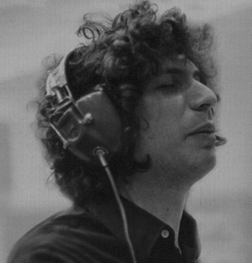
June 21st, 2011 § § permalink
Thank God for Flushing. In that noble Queens neighborhood, cheap rents in the warrens of underground food courts and back alleys allow purveyors of obscure, Chinese regional cuisine the chance to thrive. And if they do in fact thrive the next step is to take their goods to Manhattan’s Chinatown.
Thus, Flushing’s Henan Feng Wei — lauded by heroic restaurant critic Robert Sietsema — recently opened an outpost at 68 Forsyth St named He Nan Flavor. Again, thank you Flushing!
Henan is a northwest province in China and He Nan Flavor celebrates the food found in the night markets of Zhengzhou, the capital city. Forget about typical Cantonese fare, this is a bold stuff that reflects Henan’s Middle Eastern and Sichuan influences.
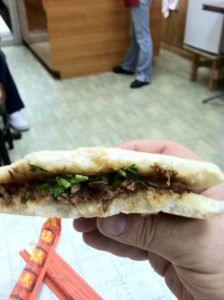 The first dish I tried was the “Pancake with Pork” which just that — a crispy, griddled hot-cake dotted with sesame seeds and stuffed with anise tinged minced pork and cilantro. Not a bad treat for $2!
The first dish I tried was the “Pancake with Pork” which just that — a crispy, griddled hot-cake dotted with sesame seeds and stuffed with anise tinged minced pork and cilantro. Not a bad treat for $2!
Next up was a dish called “Spicy Chicken Hui Mei” which was just remarkable. A huge bowl filled with hand pulled, chewy, wide noodles covered with stewed chicken. These noodles come lathered in a sauce of red chili oil, Sichuan peppercorns, tiger lily bulbs and cumin seeds. It was a taste explosion. While the chili oil added a satisfying burn, the Sichuan peppercorns have a narcotic, numbing effect and great flavor — but it is the earthiness of the cumin seeds layered against those pleasantly chewy noodles and stewed chicken that makes the dish something to dream about on a cold, winter day. 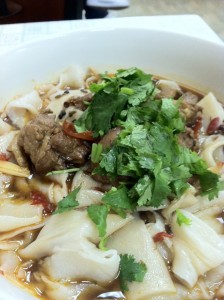
On further visits, I tried the Lamb with Lo Mein Soup — which was those same amazing noodles in a milky broth redolent of lamb and an under tone of anise. Powerfully addictive. I also tried their boiled dumplings which come 15 to an order!!!! No dish here tops out over $6 and it is a generally clean and cheerful place with attentive owners who have a real pride and seem genuinely happy that you have decided to dine with them. On the wall there is a photo of a dish called “Big Tray of Chicken” — I will be back!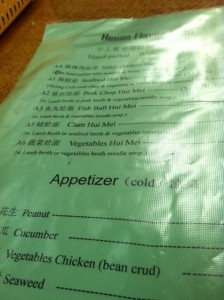
June 20th, 2011 § § permalink
Bo-Bo was a tiny restaurant located on Pell Street in New York’s Chinatown. No reservations. Often there was a 45 minute wait. Well worth it.
HG has forgotten the details of some of Bo-Bo’s best dishes, but one stands out. HG and BSK always ordered (and savored!) a big lobster roll. No, it was not the popular, New England lobster-and-mayonnaise on a hot dog roll. This was a giant sized egg roll stuffed with big chunks of lobster. To die for, as the cliche has it.
Bo-Bo was the first of Esther Eng’s five Manhattan restaurants and it set a new standard for Chinese food in New York. Curiously, Esther Eng was not just an enterprising restaurateur, but a groundbreaking figure in Chinese cinema. From 1936 to 1949 she produced, distributed and directed nine features and gave Bruce Lee his first screen debut. One result of her incarnation as a cinematic auteur was that Bo-Bo was often adorned with gorgeous Chinese actresses. When she passed away in 1970, the New York Times’ obituary simply read: “Theatrical director, producer, restaurateur, a great lady.” 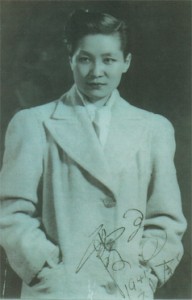
June 19th, 2011 § § permalink
Henri Soule’s Le Pavillon on 57th and Park in New York was the best restaurant in the world and HG has never seen it surpassed. The combination of Soule’s imperious attention to every detail, the great (and relatively simple) food, the comforting lighting, the glamorous crowd, the gentle and efficient service—-all created a joyous experience.
Some memorable dishes: Fillets of smoked eel topped with whipped cream infused with freshly grated horseradish. Duck with olives. Lump crab meat gratin. Souffle potatoes. Steak au poivre. Sweetbreads in puff pastry. Spring asparagus with Hollandaise. A simple grilled ribsteak with a cornucopia of wild mushrooms. Poule a Pot (which HG shared at lunch with labor mediator Theodore Kheel). Marrons au Mont Blanc (a mini mountain of pureed candied chestnuts topped with sweet, whipped cream).
Must stop. HG has tears in his eyes.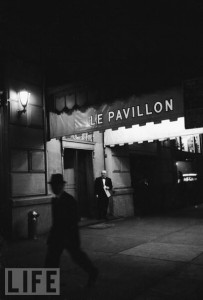
June 6th, 2011 § § permalink
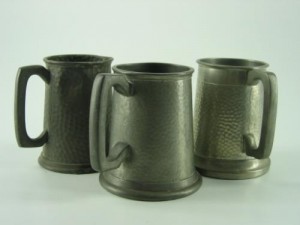 When HG was a working journalist headquartered on New York’s East 45th Street, post deadline thirst often directed HG and companions to the nearby Old Seidelberg Bar (alas, long gone) on Third Avenue. Lots of dark oak. Dimly lit, but not gloomy. Very professional bartenders who kept heavy tankards chilled and knew how to tap beer in the right proportion of body and foam.
When HG was a working journalist headquartered on New York’s East 45th Street, post deadline thirst often directed HG and companions to the nearby Old Seidelberg Bar (alas, long gone) on Third Avenue. Lots of dark oak. Dimly lit, but not gloomy. Very professional bartenders who kept heavy tankards chilled and knew how to tap beer in the right proportion of body and foam.
Ahh, the beer. Many excellent German brews on tap plus the best from New York’s local breweries. Liederkranz cheese, raw onions, pumpernickel bread, pickled pig’s knuckles comprised the hearty accompaniment. The Seidelberg was contemplative bar, HG and his contentious companions learned to moderate their tones. Curiously, it was a favorite watering hole for the great Phil Cavaretta and his Chicago Cubs. The ball players did not encourage conversation, preferring to think about sliders, knuckle balls and breaking curves while gazing into the depths of Old Seidelberg’s tankards.
June 4th, 2011 § § permalink
With the delicious irony that only Middle Europeans are capable of, waiters at the long departed Eclair Bakery/Restaurant on New York’s West 72nd Street, referred to each other as “Herr Doktor.” Eclair’s heyday was the late 30’s through to the 60s. Its customers were the Europeans, primarily Jewish, who had fled Hitler and wound up, for the most part, in the Washington Heights and Upper West Side neighborhoods of New York. Yes, many of the waiters had been Doctors in Europe, or lawyers, or architects, etc.. In New York they were waiters. They did not bewail their fate. They were alive.
Eclair catered to displaced novelists, musicians, singers, actors, artists and a host of intellectuals of every cerebral and artistic variety. And, the little, bald guy in the corner was Isaac Bashevis Singer (long before he became famous), eating his inevitable (he was a vegetarian) tuna fish sandwich. The women in the Eclair were bosomy, voluble, perfumed and flirtatious. It was a sexy place, echoing Viennese, Budapest and Bucharest coffee houses. The pastries were outstanding. Coffee came adorned with three inches of schlag (whipped cream). It was more than a bakery. Eclair was also a restaurant with outstanding wiener schnitzel, chicken paprikash and other artery clogging specialties of Mittel Europa. A multitude of languages was spoken at Eclair—German, Russian, Polish, Hungarian, Czech, Yiddish, Rumanian. To HG’s young ears it was all music. Eclair was owned by A.M. Selinger, Italian-born, Czech-reared. When he died in 1998 his New York Times obituary summed him up perfectly: “However long they lingered, the Eclair customers found a ready welcome from the proprietor, a small, natty man of legendary conviviality. a wide circle of friends and a vast array of pluperfect pastries.”
Whenever HG thinks of him, HG smiles
May 4th, 2011 § § permalink
In the early years of their marriage, HG and BSK often suffered from the money shorts. This did not prevent the Young Marrieds (and recent parents) from living very well. Indeed, when wallets were empty, HG and BSK went to the sumptuous Oak Room of the Plaza Hotel where HG had a charge account. The Oak Room radiated chic and old fashioned glamour. HG and BSK once dined at a table next to one occupied by Cary Grant and a merry party. It was a fitting setting for that most debonair of movie stars.
And what was on the menu for impecunious but happy HG and BSK? Beverages: Icy vodka martinis (for HG), carafes of the very good house Chablis and house burgundy (for BSK and HG) . First course: Thinly sliced Scottish smoked salmon with capers, lemon and olive oil. Buttered brown bread. Main: Tournedos (rare chunks of the center of beef tenderloin) in a fragrant wine sauce. Sides: Souffle potatoes wrapped in a linen napkin and served in a silver dish. Braised celery topped with beef marrow. Dessert: Chocolate pots de creme. Truly luxe dining. And, the Plaza never murmured when it took HG six months to pay the bill.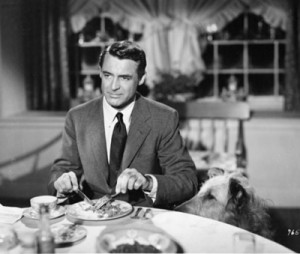
April 30th, 2011 § § permalink
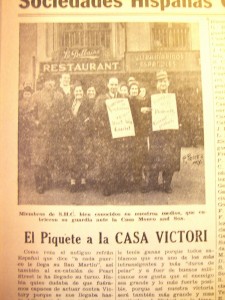 During HG’s college days (not a century ago…but close), HG had to choose between two venues for HG’s romantic Saturday night dinner-and-movie dates.
During HG’s college days (not a century ago…but close), HG had to choose between two venues for HG’s romantic Saturday night dinner-and-movie dates.
There was the inevitable Chinese restaurant which charged 50 to 75 cents for a choice of egg drop or wonton soup; a “combo” platter and a desert of an almond cookie with tea. And, there was the more ambitious, but still very affordable, Spanish restaurant, La Bilbaina, on West 14th Street which was at the heart of the now extinct “Little Spain” neighborhood. La Bilbaina had bullfighting posters, exciting flamenco music on its sound track and candles on its tables. A scene to stir tender emotions. Dinner consisted of a large bowl of spicy bean and kale soup followed by an oversize platter of yellow rice, lots of red beans and hot chorizo. In fact, much of the La Bilbania menu consisted of beans in various forms and lots of garlic. The beverage was a rough and ready sangria. To call the wine plonk would be dignifying it, but it quenched the thirst. Dessert was flan. Total cost of dinner a deux (with tip) hovered around $3.50.
One may question whether a meal chock full of beans was the proper prelude to romance. Gallant HG and his earthy girl friends found a bit of musical accompaniment no impediment to young amour.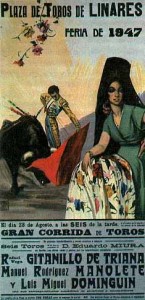
April 17th, 2011 § § permalink
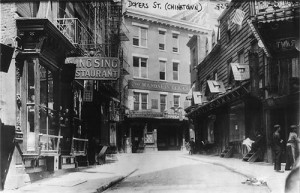 In 1957, a super-cool pal of HG took him to lunch at Nom Wah Tea Parlor on Doyers Street in New York’s Chinatown. In the days of the Tong Wars when Chinese gangs fought for control of opium, gambling and extortion rackets, Doyers (which is shaped like an elbow) was called “The Bloody Angle” and it was a veritable killing field. But, all was peaceful when HG dug into a meal of steamed and fried dumplings, pork buns, spare ribs and other savories. HG learned this type was food was known by the collective name: Dim Sum. The Dim Sum was brought to the table on carts wheeled by serious Chinese women. The danger was stuffing oneself on the offerings of one cart when an even better cart was waiting in the wings. Condiments were hot mustard and Hoisin sauce. The beverage was tea, of course, but HG supplemented this with a bottle of cognac. That first visit led to scores more. BSK became a devotee as did gifted daughter LR and SJ. Nom Wah was ludicrously cheap, of course, as was everything in the Chinatown of that era. HG had many feasts of fried crabs in eggs sauce ($1.75 at Wing Fat) , shrimp in black bean sauce ($1.25 at Yuet Sun) and other laughably priced delicacies up and down Mott Street. How about surprisingly good grilled pork liver for 45 cents? In oncoming years Chinatown was flooded with huge, Hong Kong-style dim sum parlors. HG hasn’t been to Nom Wah in years and didn’t know if it even existed anymore. Voila! Nice story in NY Times a few days ago. Still in business under management of new generation of owners. No carts. Dim sum made to order. Still good. Still cheap. Decor has been kept the same with only some very minor refurbishments. Can’t wait to get back and refresh happy memories.
In 1957, a super-cool pal of HG took him to lunch at Nom Wah Tea Parlor on Doyers Street in New York’s Chinatown. In the days of the Tong Wars when Chinese gangs fought for control of opium, gambling and extortion rackets, Doyers (which is shaped like an elbow) was called “The Bloody Angle” and it was a veritable killing field. But, all was peaceful when HG dug into a meal of steamed and fried dumplings, pork buns, spare ribs and other savories. HG learned this type was food was known by the collective name: Dim Sum. The Dim Sum was brought to the table on carts wheeled by serious Chinese women. The danger was stuffing oneself on the offerings of one cart when an even better cart was waiting in the wings. Condiments were hot mustard and Hoisin sauce. The beverage was tea, of course, but HG supplemented this with a bottle of cognac. That first visit led to scores more. BSK became a devotee as did gifted daughter LR and SJ. Nom Wah was ludicrously cheap, of course, as was everything in the Chinatown of that era. HG had many feasts of fried crabs in eggs sauce ($1.75 at Wing Fat) , shrimp in black bean sauce ($1.25 at Yuet Sun) and other laughably priced delicacies up and down Mott Street. How about surprisingly good grilled pork liver for 45 cents? In oncoming years Chinatown was flooded with huge, Hong Kong-style dim sum parlors. HG hasn’t been to Nom Wah in years and didn’t know if it even existed anymore. Voila! Nice story in NY Times a few days ago. Still in business under management of new generation of owners. No carts. Dim sum made to order. Still good. Still cheap. Decor has been kept the same with only some very minor refurbishments. Can’t wait to get back and refresh happy memories.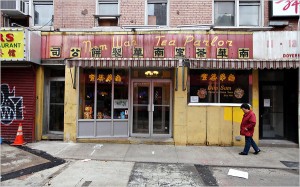
March 30th, 2011 § § permalink
A cautionary tale about hot dogs and Mallomars. Many years ago HG had a real estate mogul client. He was a big guy. His weight varied between 275-300 pounds. He was on a perpetual diet. Some lettuce leaves and cottage cheese for lunch. However, HG knew his guilty secret. His baronial desk had a drawer stuffed with Mallomars (an oddly regional and seasonal Nabisco confection of a cookie base, marshmallow top, all robed in sweet chocolate). Most evenings the mogul would pick HG up at his Broadway office and drop him off at his West Side (rent controlled) apartment en route to the mogul’s Westchester estate. Lounging in the leather seats of the chauffeur-driven Rolls Royce, HG and the mogul would hatch various public relations ploys to further enrich the mogul and gild his image. Every night the Rolls would come to an abrupt stop at the Gray’s Papaya at Broadway and 72nd. The chauffeur would leap out and bring back six hot dogs and two pina coladas (the relationship between “healthy” papaya drinks and Hot Dogs that exists only in New York is a story for another day). The mogul would wolf them down while continuing his business conversation. “I can’t resist hot dogs,” he explained. HG is sure he had some more lettuce leaves and a piece of grilled (skinless) chicken breast for dinner in Westchester. He was a sweet guy. He died young. There is a park in Queens named after him. But, no memorial plaque at the Gray’s Papaya.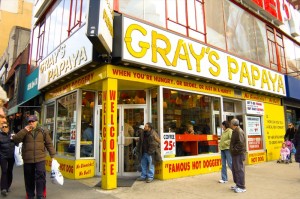
 Frank Sinatra loved it. So did Jason Robards and David Mamet (who wrote about it in his book of essays Make Believe Town: Essays and Remembrances. Sidney Poitier dined there often when he was appearing on Broadway. Coleen Dewhurst called it “family.” HG is referring to Delsomma, an Italian restaurant at 266 W. 47th Street in the heart of the theater district. It closed in 1993, a victim of the drug dealing, prostitution and street violence that plagued 8th Avenue and surrounding side streets in the late 80’s and early 90’s. Run by the Cardinale family for 40 years, every diner was treated like a star. HG and BSK were introduced to Delsomma by their dear friend, the late Michael Small. Michael, who composed the score for many memorable films, took them there after the premiere of Marathon Man (with Dustin Hoffman and Lawrence Olivier playing a Nazi dentist). Michael did the chilling score.
Frank Sinatra loved it. So did Jason Robards and David Mamet (who wrote about it in his book of essays Make Believe Town: Essays and Remembrances. Sidney Poitier dined there often when he was appearing on Broadway. Coleen Dewhurst called it “family.” HG is referring to Delsomma, an Italian restaurant at 266 W. 47th Street in the heart of the theater district. It closed in 1993, a victim of the drug dealing, prostitution and street violence that plagued 8th Avenue and surrounding side streets in the late 80’s and early 90’s. Run by the Cardinale family for 40 years, every diner was treated like a star. HG and BSK were introduced to Delsomma by their dear friend, the late Michael Small. Michael, who composed the score for many memorable films, took them there after the premiere of Marathon Man (with Dustin Hoffman and Lawrence Olivier playing a Nazi dentist). Michael did the chilling score. 













